The Working Out: A Brief Introduction to Puzzle Design
By gamer_152 5 Comments
Note: The following article spoils puzzle solutions for these games: Baba Is You, Braid, Broken Age, Cogs, Contradiction: Spot the Liar!, Death Squared, Deponia, Gabriel Knight 3, Genesis Noir, King's Quest, The Legend of Zelda: Breath of the Wild, Nancy Drew: Stay Tuned for Danger, Opus Magnum, A Plague Tale: Innocence, Portal 1 and 2, Q.U.B.E 2, Resident Evil 2 (2019), Slayaway Camp, The Turing Test, Unravel, and The Witness.

Video games still have a reputation as unyielding assaults of action and violence. Yet, as people who play games, we know that even mainstream titles aren't all kicking down doors and mulching enemies with chainguns. They often involve a lot of sitting around and thinking because puzzles are a mainstay of the format. You can't "get" video games without getting puzzles. But like so many other elements of the medium, you can read endlessly about puzzles without understanding how they tick. So, what makes a satisfying puzzle? For that matter, what makes a puzzle?
Defining Puzzles
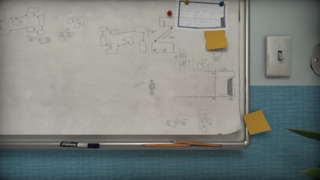
Like "art" or "game", "puzzle" has a lot of definitions in circulation with no method for determining a definitive one. However, we can find a definition that works for our purposes by looking for commonalities between the things we refer to as "puzzles". I'd argue that most players identify puzzles as challenges that significantly test their reasoning. This would be true of a gameplay section in which the player is working out how to escape their home on a space station, how to transit an orb to a receptacle, or which of a subject's statements contradict each other. It's the working out that makes a puzzle a puzzle.
The Skills Puzzles Test
In puzzles, players employ an IF-THEN mode of thinking. "If I have a screwdriver, then I can unscrew the grate", "If I freeze the orb in time, then I can store up momentum in it", "If the interviewee was at their parent's home at the time in question, then they can't also have been at the market". This approach to problems employs inductive reasoning, in which we generalise from our previous experiences. For example, if we saw a mirror deflect a beam of light at a 45-degree angle before, we can safely assume another mirror will do the same. We also use deductive reasoning, in which we apply general knowledge to specific challenges. For example, if you know how a mirror deflects light and where each mirror in the room is situated, you can work out how to route the light from the source to the receiver.
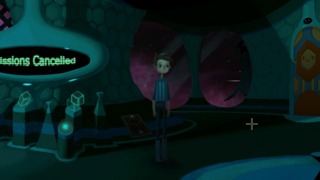
This is not to say that puzzles only involve logical thinking and speculation. Many also test observation. Formulating an exit plan from the space station in Broken Age requires working out that you could use your screwdriver to open the vent. Yet, to do that, you must spot the vent in the first place. A Plague Tale: Innocence has many puzzles that task you with hitting a ring to loosen a chain, but that ring's location isn't always obvious.
Puzzles also often test your powers of memorisation and recall. A head for saving and retrieving information can help you when patterns from one puzzle game appear in another. There are popular tropes of the genre, like the weighted seesaw conundrum or the panel on which each switch inverts some combination of the other switches. Exact designs differ, but all puzzles of these types implement some of the same logic. Even a sense of when and how puzzle games will try to trick you, regardless of mechanics, can be learned. Specific games will also teach you the functions of mechanical entities, as well as techniques that will be indispensable during your quest, which you must mentally save and load. Rewards in puzzle games don't have to be resources or aesthetic feedback; they can be knowledge to use going ahead. Many puzzles are interlinked and cannot be randomly reordered within their game; they are scenes in a directed journey of extracting and applying information.
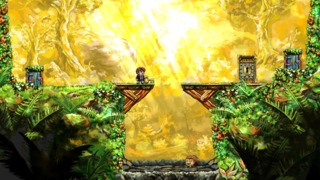
In the time-travel game Braid, certain items will remain in your hand even when you reverse time, and certain pits are too deep to climb back out of. In an early level, you learn that if you jump into a chasm with a valuable in it, collect the item, and then reverse time, you can be standing back where you started with the object you need. This is of use in future stages. In Q.U.B.E. 2, green panels let you spawn moveable cubes, and orange panels let you extrude platforms from walls. An essential technique in the game is spawning a green block in front of one of those orange panels, and then pulling the orange panel out of the wall to push the green block across the floor. You cannot place these tutorial levels from Braid or Q.U.B.E. 2 after those in which we apply their techniques. Alone, these dynamics from Braid and Q.U.B.E. might sound trivial to record and remember, but when the player is constantly juggling concepts, and under cognitive strain, memorisation and recall take effort. Some puzzles are also large enough that you can't keep all of them on screen at once. So, you must remember at least some of what's outside the frame.
Reasoning, observation, memorisation, and recall are easier to apply when we aren't distracted or pressured by threats. Therefore, the puzzle games that really want to grill our logic and imagination mostly don't involve enemies that can chase us down or a target to race against. They often have no explicit fail state, and in the case that they do, won't set us back far upon a loss. No punishment or minimal punishments for failure also mean that we have less trouble with our work being spontaneously erased, which is always annoying. Re-doing a hand-eye coordination challenge after we've just done it can still be taxing; every headshot requires accuracy, every jump requires timing. With a puzzle, once you know the solution, the challenge is nullified, so immediately repeating a puzzle, or part of one, feels like busy work.
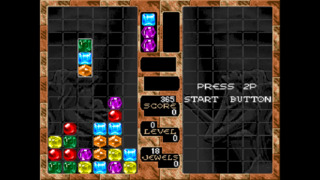
Conversely, games that want to integrate time limits or combat into puzzles can survive by not placing too much strain on the player's reasoning, observation, etc. Working out what blocks to swap in a match-three grid or the procedure for a puzzle boss in an action-adventure game would be straightforward if you didn't also need to dodge attacks or fret about the clock. However, with those constraints involved, a little cognitive challenge can go a long way.
Good Puzzle Mechanics
So, what constitutes a successful puzzle mechanic? Why do some ideas fade into the wallpaper while others stick in your head? In short, objects and abilities in puzzle games have a high potential when they can interact with a wide range of other objects and abilities in many different fashions. Having mechanics that can synergise with others in countless distinct ways makes a game's design elegant and uncluttered while freeing the designer up to create a wide diversity of experiences. This is true of game mechanics in general. But there are also reasons to make highly adaptable play elements that pertain specifically to the puzzle genre.
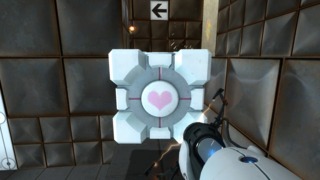
For one, it adds to the mystery of the puzzle. If a cube's only use is to weigh down pressure plates, then we can perform dumb pattern recognition every time we encounter one. If you see a block, all you have to do is find the switch it goes on; a rote kind of square peg goes in the square hole logic. However, if a cube can depress a plate, deflect a ball of plasma, block oncoming fire, knock down a turret, act as a platform, or move through a portal, we can't assume the function of any one cube. We must work out the purpose of each cube on a case-by-case basis. To identify this principle in a different genre, note that in many block puzzle games, any tile can stack on or against any other. Therefore, there are numerous shapes you can build out the board in, some useful, some not so useful. Not every object needs dizzying depth, but memorable mechanics and ones with longevity usually have it.
Another good reason to make entities in puzzles flexible is to reduce the amount of tutorialising the game has to do. A lot of games want us to be clear on the functions of the verbs we're using. But if an object or ability only has a few purposes, the designer will teach us how to use it and quickly exhaust all its possible interactions with other elements. Then, they will have to introduce another in its place, again doing the necessary bootstrapping. That object will also get burned up fast, and then the game must do more education as it introduces another. The player is spending more time in Mechanics 101 and less time in advanced applications of those mechanics. The items and powers in puzzle games are more liable to this kind of exhaustion than those in action games because, again, game feel and hand-eye coordination have longevity that logic problems don't. The items and powers in action games depend more on the former concepts, while those in puzzle games are weighted towards the latter.
Finally, a puzzle game could want components with high interactive potential because we would be able to make many revelatory discoveries about those components. Those discoveries are what we love about plenty of puzzles. Slayaway Camp is a sliding maze game in which you can only move in straight lines and only stop once you hit an object or character. The goal in each level is to collide with every one of your "victims", killing them, and removing them from the map, before escaping to the exit tile. Stage 5 teaches us that when we murder an NPC standing adjacent to another, that witness NPC will run away from the victim, in the direction they are facing, until they hit something solid.
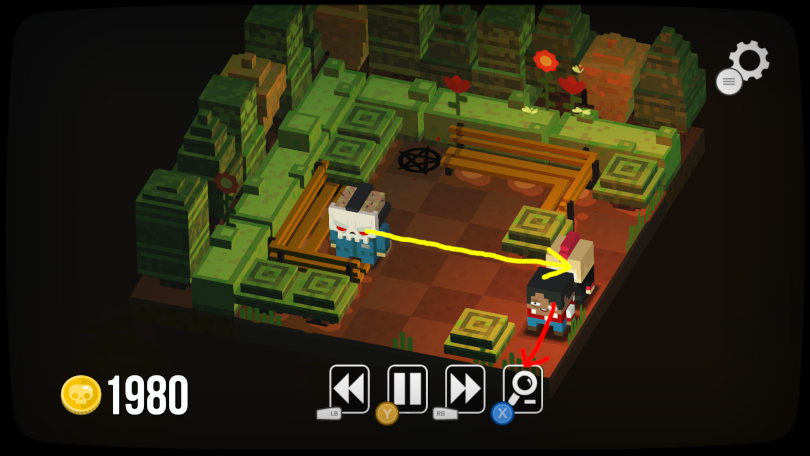
That rule means that you can force enemies to flee to a certain square and then use them as a buffer to align yourself with places in the level you might otherwise be unable to reach. You can use them to build out the maze. This technique wouldn't be possible if the NPCs only interacted with you and not with each other. Plus, you wouldn't get that little moment of confusion upon seeing you have no exit and feeling like a genius when you figure out how to open one up.
In the puzzle game Death Squared, you control both a red and blue robot and must move them to their respective goals. Level 16 of the game is a multi-storey environment in which the blue bot can stand on red blocks, and the red robot can stand on blue blocks, but not vice-versa. Despite the fact that the red bot falls through the red blocks, you must get it to the other side of a gap with red blocks in it.
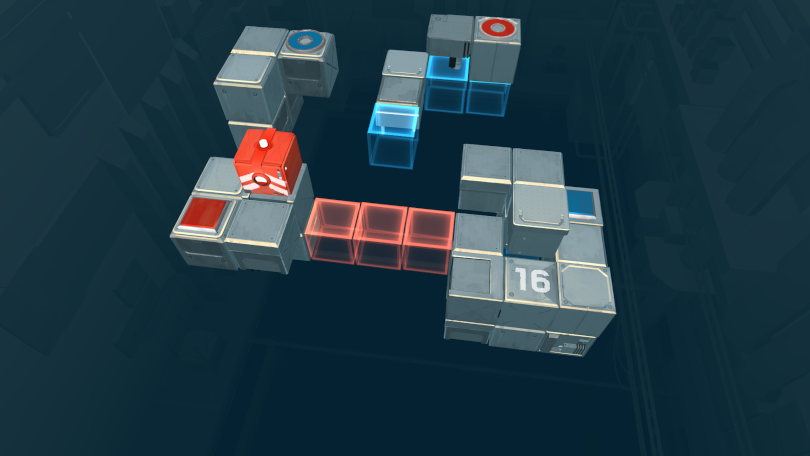
Each bot can also stand on a button of their colour to activate an elevator elsewhere in the level.
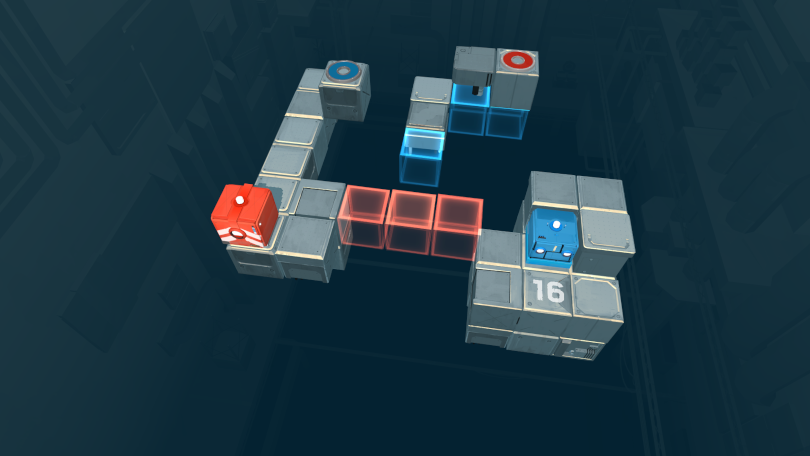
Blue starts the level in a basement area, cut off from red, but by getting red to stand on a button, we can lift blue up to be just below red. We then get blue to stand on the red bridge and use them to ferry red across the chasm.
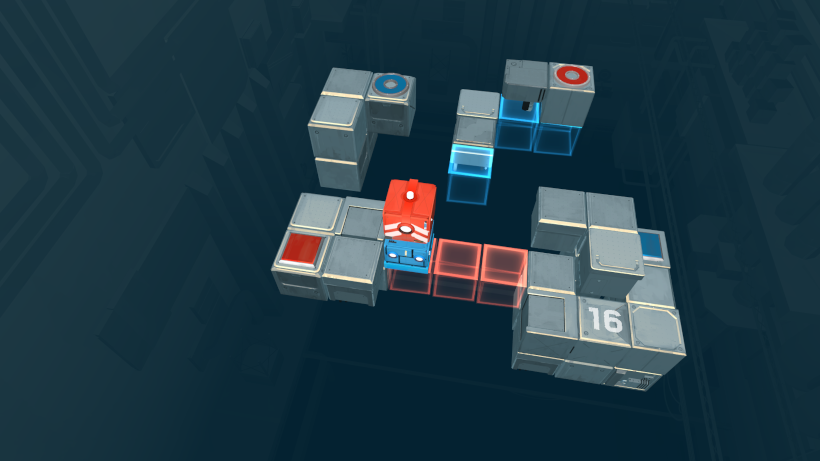
This puzzle is only possible if the bots work in conjunction with the buttons and lifts, can stack atop each other comfortably, and if they have unique relationships with the coloured blocks. If you take away any of those possible interactions, the puzzle, and the pleasant moments of realisation are lost.
The lack of depth in traditional point-and-click puzzle games is likely one reason that they were overtaken by other types of puzzle experiences. If there's only one use for the developer fluid or the yellow petal, they tend to feel flatter and less fully realised than, say, the ability to search words in a database or the power to copy yourself, which can find many more applications. There is one other reason that you might want mechanics that have lots of points of contact with each other, but that's a topic for later.
Good Puzzle Design
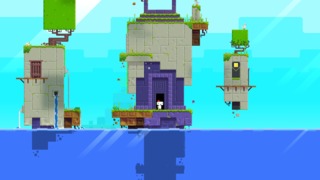
In addition to mechanics offering a wide variety of options, the levels or puzzles themselves must also do, for the same reasons: you want player experience to be varied, to make solutions non-obvious so that players have to think hard, to avoid having to introduce new concepts constantly, and to facilitate pleasant realisations. Mechanical design and level design are inseparable. A caveat, however: "Aha" moments are generally less common in games that place a stronger emphasis on action than working out. Revelations are also rarer in casual puzzle games, which are meant to be more accessible and relaxing than they are confrontational.
As in all games, the quantity of dynamics between elements must be balanced against limitations in what the player can do. Audiences and critics often see it as a virtue when an experience lets the player find multiple solutions to the same problem. When games have alternative routes through a level, allow us to select characters with distinct abilities, or let us choose whether we hack, stealth, or shoot our way around a problem, we tend to say that's inherently good. More valid options heighten player expression and accommodate players with different abilities. They also strengthen the sense of agency, the capacity for experimentation, replayability, and potentially, realism.
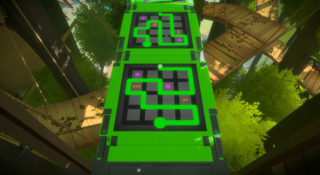
Puzzles break this common design wisdom as they frequently only allow one correct solution to a problem while remaining gratifying for audiences. There is a single path through most of the panels in The Witness. There's only one "win" state for the mechanisms in the original Myst. In Critical Mass, you can't insert new blocks anywhere in the grid; you can only stack them atop the current layers. By boxing us in, puzzles force us to focus on a goal.
Cogs is a collection of sliding tile puzzles, and some of those tiles have gears on them. The objective is to move the gears into the proper position to transfer the rotational force from a cog on one side of the board to a cog on the other. If we could drop these components in many different positions and still transfer that rotation, we wouldn't have to think as acutely when we place them. It's because we have to build a specific machine that we consider every cog's role in the overall mechanism. Or take the riddles in Nancy Drew: Stay Tuned for Danger. We must input our answers to these riddles as text, and every one of them is a closed question: a query with one correct answer. When the clerk says, "The more you make, the more you leave behind", we can only answer "Footsteps". When she asks, "What is full of holes but holds water?" she will only accept the response "Sponge". If these were questions with many correct answers like "Name a US president" or "What's your favourite flower?", you'd need to think about it a bit, but there are so many valid responses you could afford to be lazy. When the game is less flexible towards you, you must bend further towards it to meet your target.
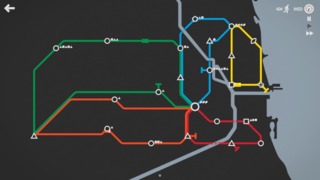
This isn't to say that puzzles can't account for different skill levels between audiences or produce new experiences for returning players. However, the puzzle genre leans into it less than others. When puzzle games do cater to these interests, they are also less likely than other games to do it by offering a platter of diverse solutions to challenges. Although, there are exceptions in block puzzle games or systems construction games like Mini Metro, Bridge Constructor, or the Zachtronics library. As discussed, block puzzle games can get by making you think fast instead of hard, and systems construction games have characteristics that only some of their peers want to replicate. For example, Mini Metro doesn't have an explicit success condition which most puzzles are meant to have. However, just because you can't find many correct answers for one puzzle also does not mean that there aren't a lot of approaches available. On the contrary, good puzzles are often baffling because you could try many different actions, even if only one or two will work.
Categorising Puzzles
Drilling down a little further, we can divide puzzles (or at least sections of puzzles) into two categories. Our first category is puzzles in which we don't understand the relationship between the involved entities, and the challenge is in figuring it out. We'll call these Relationship Puzzles. Relationship Puzzles are common in adventure games and in tutorial areas of other puzzler types. Examples include deducing that you can foil the fire-breathing dragon by throwing a bucket of water at it or working out, unprompted, that the lines you draw on panels must always separate black and white dots.
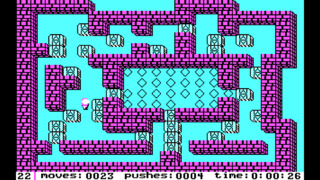
The other category is puzzles in which we understand the relationships between the gameplay entities but are unsure about the configuration they should exist it. We'll call these Configuration Puzzles. This one takes a minute to wrap your head around because you'd think that if we know the rules a system abides by, it should be a breeze to arrange the parts of that system to meet any goal. However, that's not necessarily true. In Sokoban games, you can use your avatar to push a crate one square in any direction unless a push would cause it to intersect with another crate. By moving crates, you must clear yourself a route to the exit. The rules are incredibly minimalist, but working from those rules to a solution can still be a nightmare. Or there's a puzzle in Professor Layton and the Unwound Future in which we must find the working pen in a set of four. We are given the rules to select the correct pen, e.g. "All pens currently have the wrong colour caps" or "The working pen is to the left of the one that should have the green cap.". However, we have to do some hard graft to get from abstract guides to a specific idea of which pen is the answer.
It is also possible for a single puzzle to be a Relationship Puzzle and a Configuration Puzzle. For example, in the Resident Evil 2 remake, there's a puzzle in which you must transfer liquids between vials and fill one beaker to a target level. The catch is that when you pour the chemical from one container to another, you must move all of it into that second container, and not just some. Completing this puzzle involves figuring out how the vial machine operates and divining your objective from the clues, but also concluding what vials you must switch liquids between in what order. Genesis Noir contains a section in which you're destined to make a breakthrough advancement using a particle accelerator. You do this by turning knobs on various pieces of equipment to change a monitor's graphical output, trying to recreate an image drawn on a blackboard. However, you aren't taught that's the objective or how the controls affect the output.
Good Puzzle Solutions
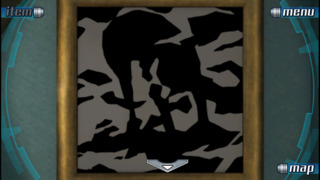
Whatever kind of puzzle the designer is producing, they need to come up with a satisfying solution for it, not an arbitrary one. For the remainder of the article, we're going to put block and casual puzzle games back in the drawer and keep our mind on puzzles in which designers are trying to generate "aha" moments. Broadly speaking, players enjoy it when solutions follow rules that they can reasonably identify. In Configuration Puzzles, objects and powers should generally function as they have previously. What acts as a rope in one level should generally not become a solid wall in the next. In Relationship Puzzles, you should be able to intuit the function of objects and powers reasonably. "The numbers on this notepad are codes to a safe" qualifies, "I have to spray a cat with a hose to make a fake moustache" does not.
Intrinsically rewarding puzzles also usually force us to change our perspective on something to reach the correct conclusion. Maybe that chewing gum that you previously saw as a piece of candy, you now consider as an adhesive, or you might realise that the objective of a section is not to carry the item across the stream. It's to place the item on a platform in the middle of the stream, swim across, and retrieve it from the other side. Many of the well-received puzzles in contemporary games also lure you into an incorrect solution by appealing to your current perspective. This creates the starkest contrast between your "Before" and "After" viewpoint on a puzzle or mechanic.
For example, in Coldwood's Unravel, you play a character made of yarn who leaves a trail of string behind them when they walk. You can grapple objects towards you with this thread. In the game's Sea stage, you pass below a couple of beams and come upon a grappleable hatch hinged at the top; the goal is to pass through this hatch. The intuitive solution is to grab the door, pull it open, and then run through, but if you're the one holding the door open, moving towards it will close it.
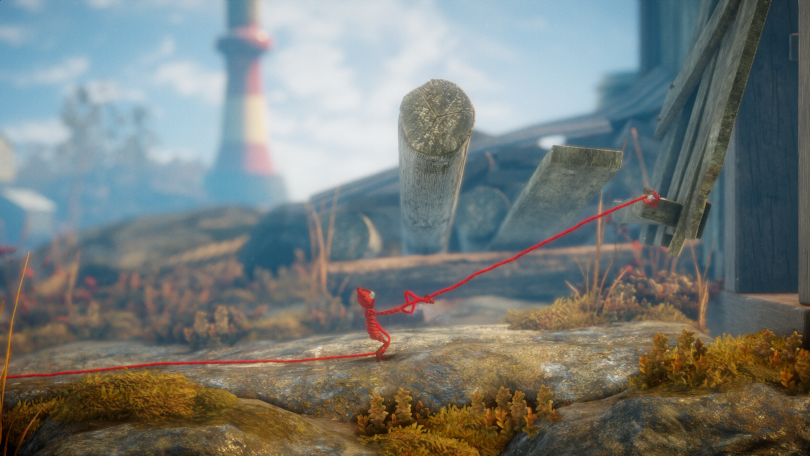
The solution comes when you realise that you can wrap your yarn around objects in the environment to change which direction the thread pulls in. If you tie your string onto the door, then pass up over that log at the top and run back towards the door, you create a pulley system which can open the hatch as you proceed in its direction.
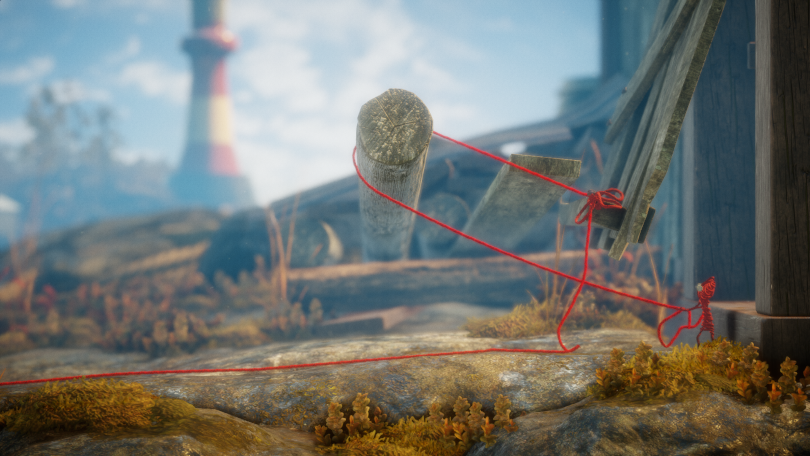
In Bulkhead's The Turing Test, we must power locks to make progress. We can do this either by inserting a power cube into them or firing power orbs into them. Our gun allows us to sap or insert power orbs at range. Level 1-7 runs in a loop and starts us on the ground floor in front of a locked door. Near this locked door is a power cube.
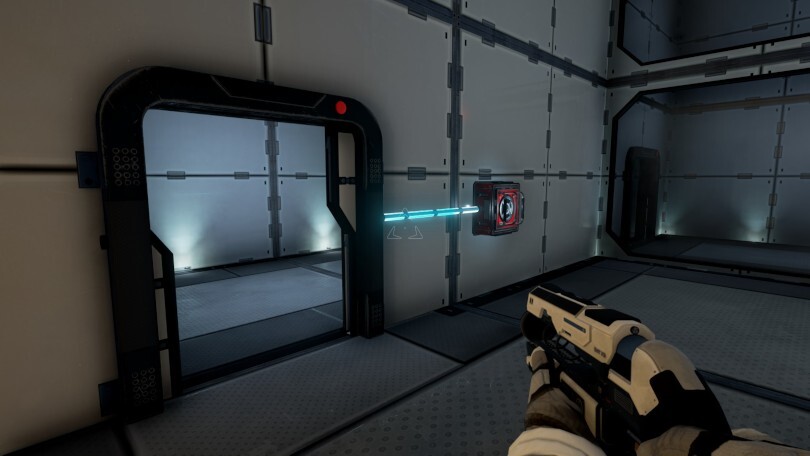
On the other side of the locked door is another door kept open by a power orb, then a staircase up to the exit, which has another lock.
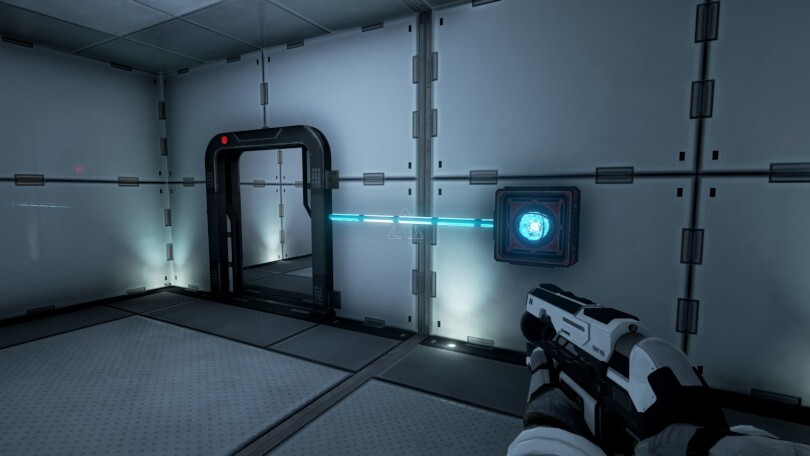
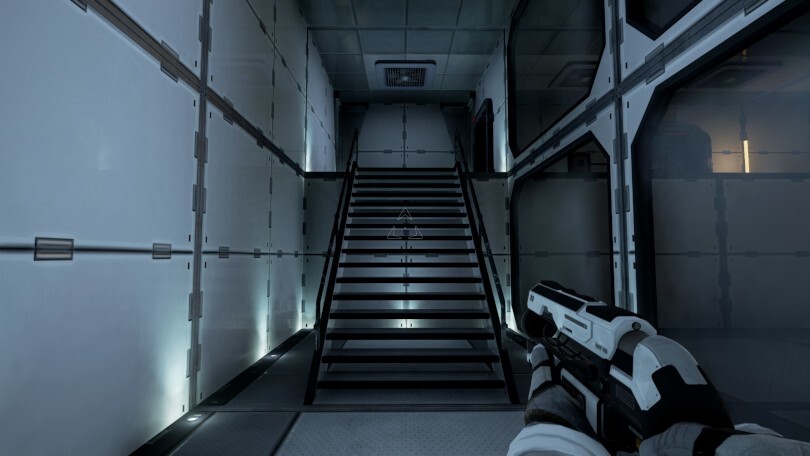
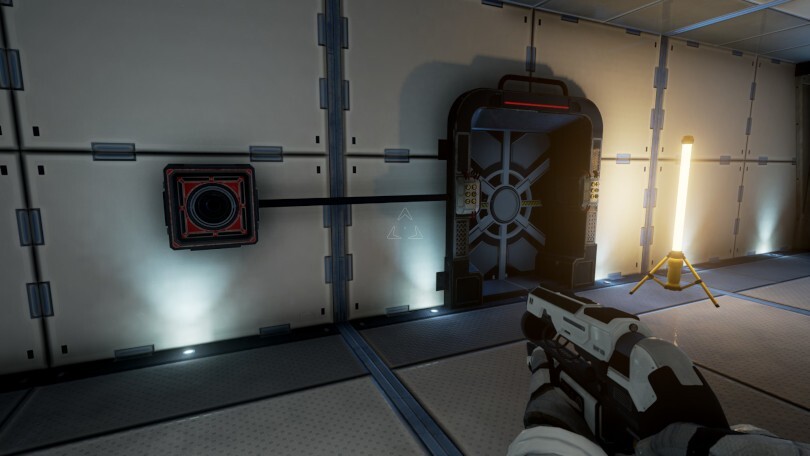
From this raised platform by the exit, you can also see the starting door and its lock.
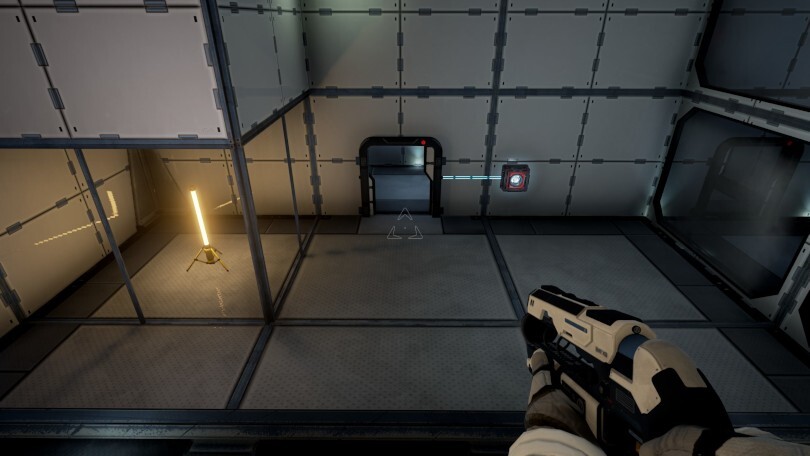
So, there are three locks but only two keys. How do we get all three doors open? The revelation comes in realising that cubes and orbs aren't equivalent. That orb can be reused and so isn't "expended" when inserted into a door. The solution is to insert the cube into the first door, collect the power orb from behind it, and then switch the orb for the cube in the first lock.

Then, you place the cube in the second lock and run up the stairs.
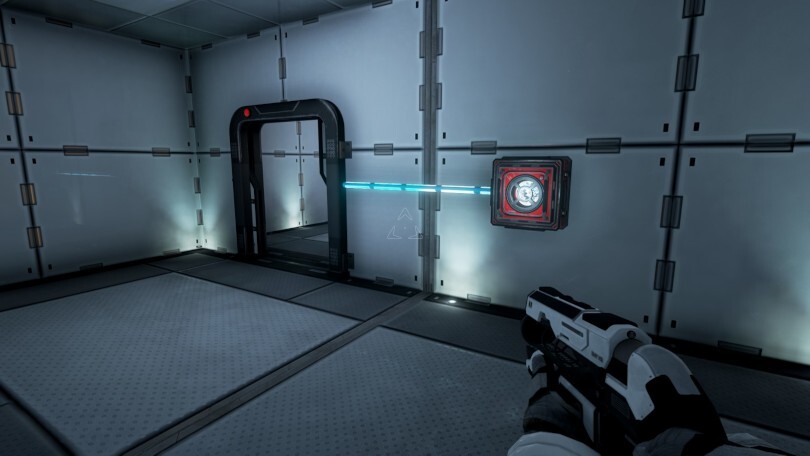
Now, you can use your gun to collect the orb from the first lock and shoot it into the third lock, opening the exit.
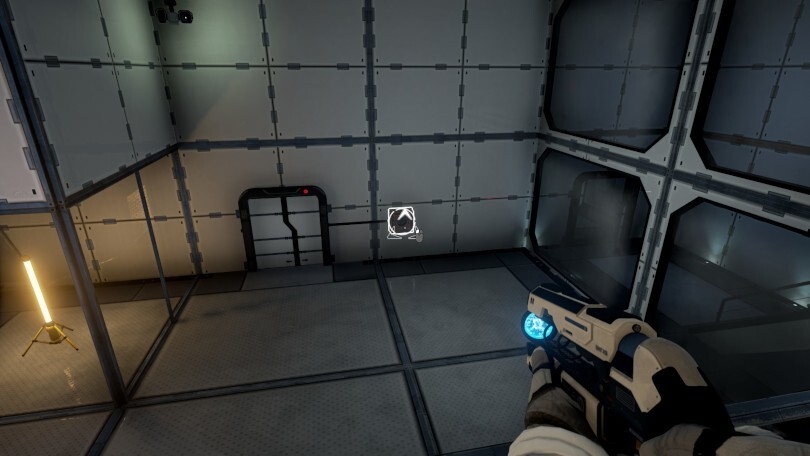

Returning to Q.U.B.E. 2, by the late game, you've learned not only that trick to push cubes we discussed earlier. You've also taken on board that you can light green blocks on fire and use orange blocks to slide them across the floor. You can even transfer fire from one item to another. In one puzzle, you have a green block generator and an orange block generator facing a door. You also have a means to set a block alight, but each block can only burn for a limited time. Your objective is to crash a burning block into the door.
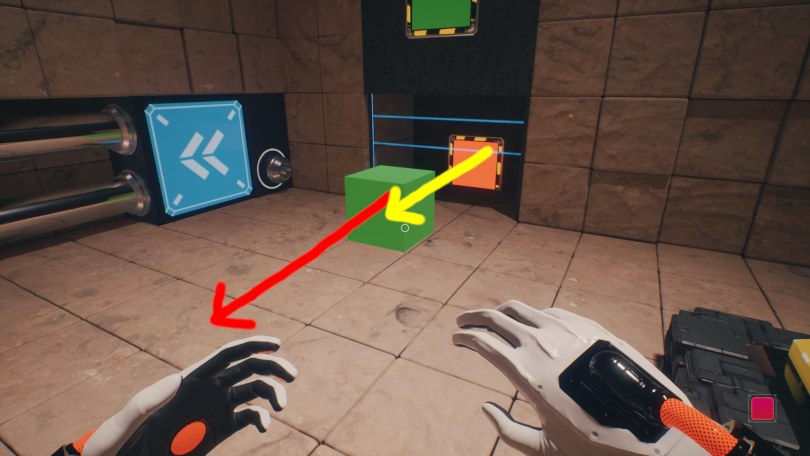
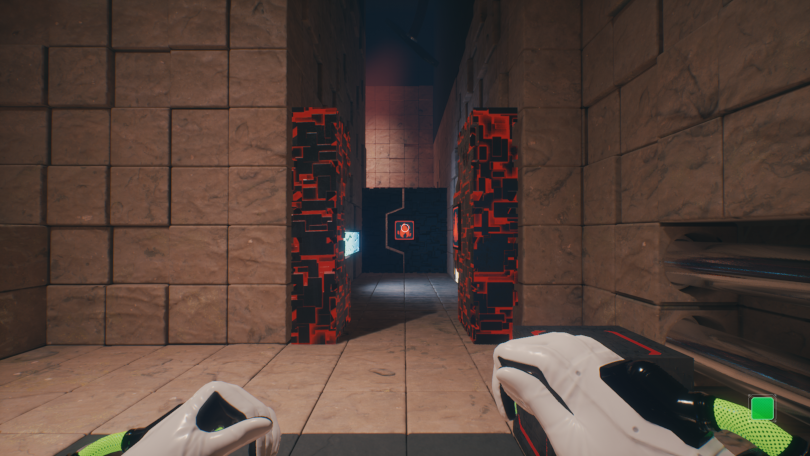
The problem is, if you set that green cube alight and then push it towards the door, the fire goes out before it reaches the door.
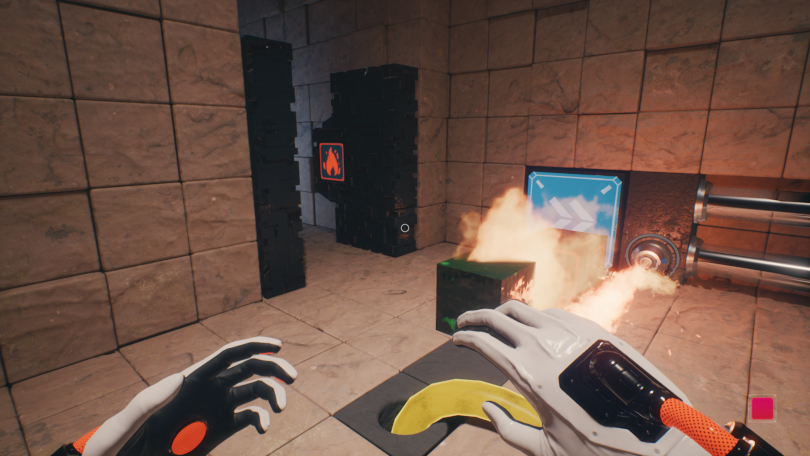

The false perception we must let go of to succeed is that we need one cube to make it all the way across the floor. We actually need to spawn a cube and push it halfway. Then, we can spawn a second cube, light that one, and push it towards the first cube. That second cube will transfer its flame to the first cube, as well as its momentum, and the first cube will be able to make it to the door, aflame.
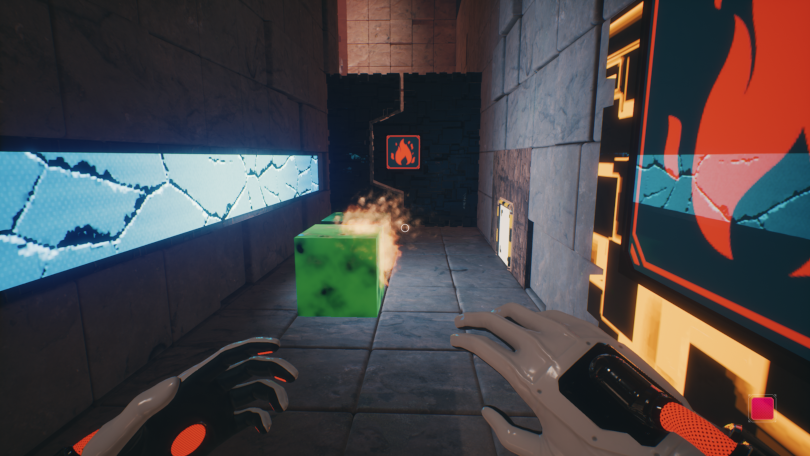

I've simplified this solution a little for clarity, but this is the gist.
How Puzzles Mislead
We know that these games facilitate ample perspective shifts by letting the involved items interact in many different ways, but how do games bait us into false solutions? A ubiquitous technique is to make wrong solutions the easiest to implement, and the right one take more steps. In Q.U.B.E. 2, pushing one block towards the door was easier than orchestrating this more complex mechanism for transferring fire from one cube to another. In The Turing Test, the simplest approach was to open the first lock, and then forget about it and just worry about the last two, but a more complex conception of how the three locks are connected is required to resolve the puzzle.
A closely related concept is that players often find it unintuitive to move backwards to advance; it feels like the opposite of progress. Designers can exploit that. In The Turing Test, we see that concept employed as the designer requires the player to re-lock some doors before they can unlock them again. In Unravel, the player had to move away from the door before they could approach it again.
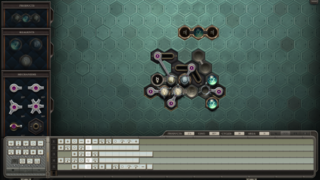
You can also mislead the player through visual and auditory presentation. In Unravel, the door was right in front of Yarny, while the beam you needed to use was out of their direct line of sight. In The Turing Test, after you pass through the first two doors, the orb you need to unlock the first and third door will then be out of sight, and potentially, out of mind. Players also come to games with mental shortcuts they've adopted from outside, like "You can't move a key at range" or "If you want to get to a goal, you should move towards it". These puzzles exploit those assumptions.
A designer can also have you use the same mechanic in the same manner up to a certain point, so you, often unconsciously, assume that mechanic must always be used that way. You'd previously used one burning cube for each fire door, so you might not speculate that there's another method. You'd not encountered puzzles before where you could use the same orb to open doors on different levels, so why would it be possible this time? Devious puzzle designers can even create a puzzle with a solution the player has already used but still have it stump them. They often give us time to forget approaches we've previously employed, make us use different approaches before returning to the former technique, or create a new spatial or narrative context around the same problem.
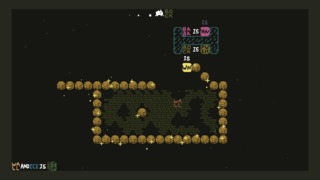
Zach Barth's alchemical puzzle game, Opus Magnum, has a habit of introducing new components only to quickly swipe them off the table. Because we have a lot of intervening puzzles in between first transmuting lead into gold and doing it on another occasion, we can forget something simple like the need for salt to catalyse the reaction. Arvi Teikari's Baba Is You is a puzzle game in which you can push together blocks with different words on them to change the rules of the game. For example, we could create the sentence "Rock is Push" to let us push rocks around or "Flag is Win" so that we win if we reach the flag. Touching the flag is the typical win condition, but in Stage 1-5, we create the phrase "Baba is Win" to skip the middle man and complete the level without reaching the goal. In Stage 3-9, we are meant to implement the same technique, creating the phrases "Baba is Rock" and "Rock is Win" to make ourselves the goal object. It's the same idea, but because there have been two intervening worlds, flipping through a small Rolodex of mechanics, it's difficult to recognise the solution, at first. Further confusion may be created by the reframing of the problem, having us write "Rock Is Win" instead of "Baba Is Win", even if we are the rock.
This is the secret final reason that it's useful for gameplay entities to be able to interact with many others in many ways. It allows for a barrage of different gameplay dynamics between a concept making its debut and being used again, allowing the player time to forget an item or ability's earlier functions.
Conclusion
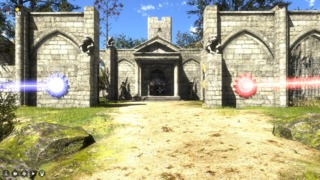
Keep in mind this is just a cursory overview of puzzles, and there's much more to say on the subject. When you break them down, the solutions to the puzzles I mentioned in Unravel, The Turing Test, and Q.U.B.E. 2 are simple. Still, any substantial puzzle can be split into smaller parts, and the player will segment them when solving. A puzzle probably won't be challenging if it relies on the player just taking many steps and if those steps are similar to the ones they've made before. What makes a puzzle demanding is when they force us to change their methodology for each step substantially. Thus, we shift our perspective on the world just that little bit. Thanks for reading.